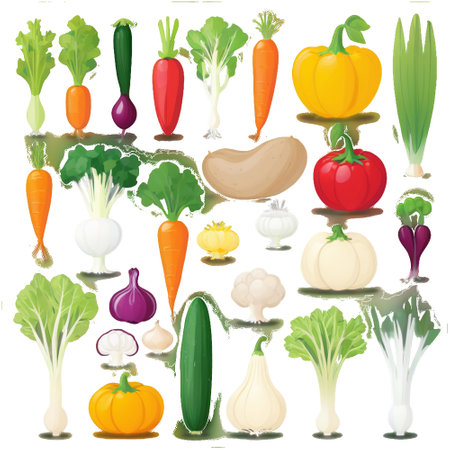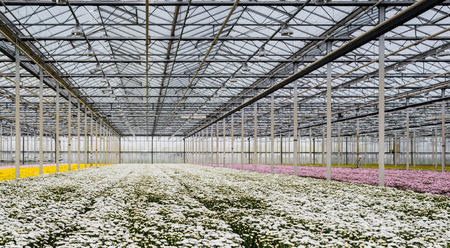Introduction to Year-Round Polytunnel Growing in the UK
Polytunnel cultivation has become an increasingly popular method for British gardeners seeking to overcome the unpredictability of the UK’s weather. Characterised by frequent rainfall, fluctuating temperatures, and limited sunlight during winter months, traditional outdoor vegetable growing can be challenging and often restricts the range of crops that can be successfully produced throughout the year. By contrast, polytunnels offer a controlled environment where temperature, humidity, and exposure to pests can be managed more effectively than in open ground. This advantage enables gardeners to extend the growing season significantly—sometimes even enabling continuous, year-round production of fresh vegetables.
The benefits of utilising polytunnels for all-season gardening are substantial. Not only do they provide protection from harsh winds, heavy rainfall, and unexpected frosts, but they also create a microclimate that encourages faster growth and higher yields. For those committed to self-sufficiency or simply wishing to enjoy homegrown produce no matter the season, polytunnels open up opportunities to cultivate a much broader selection of vegetables—even some varieties that would otherwise struggle outdoors in the British climate. Furthermore, with proper planning and crop rotation, it is possible to maximise productivity within a limited space while maintaining soil health. In summary, investing in a polytunnel is an ideal solution for anyone looking to embrace sustainable, year-round vegetable production in the UK.
Considerations for Successful Year-Round Growing
Growing vegetables all year round in British polytunnels requires careful planning and an understanding of the unique challenges posed by the UK climate. To achieve consistent yields, gardeners must pay particular attention to several key factors: temperature management, ventilation, and seasonal crop planning. Each of these elements plays a crucial role in creating optimal growing conditions under cover.
Temperature Management
The British climate is known for its variability, making temperature regulation inside a polytunnel essential. During winter, insulation can help retain warmth, while in summer, shading and strategic watering are necessary to prevent overheating. Using horticultural fleece or bubble wrap along the tunnel’s interior can offer extra protection during frost-prone months. Conversely, opening doors and side vents on warmer days will help keep internal temperatures in check.
| Season | Temperature Goal (°C) | Recommended Actions |
|---|---|---|
| Winter | 5–10 | Use fleece, close vents at night |
| Spring/Autumn | 10–18 | Monitor daily changes, adjust covers as needed |
| Summer | 16–24 | Open vents/doors, use shading cloths |
Ventilation
Adequate air circulation prevents fungal diseases and reduces humidity build-up, which is particularly important in the UK’s often damp weather. Ensure your polytunnel design includes adjustable vents or roll-up sides. Regularly check for condensation and open up when necessary—even on cooler days—to maintain fresh airflow.
Seasonal Planning Tailored to the UK Climate
Effective year-round growing relies on careful selection of vegetable varieties and sowing times suited to British conditions. Consider sowing cold-hardy crops like kale and spinach from late summer for winter harvests, while reserving heat-loving plants such as tomatoes and peppers for spring sowing once risk of frost has passed. Stagger planting dates and rotate crops to maximise productivity and soil health throughout the seasons.
Sample Seasonal Crop Rotation Plan
| Season | Main Crops to Grow Under Cover | Sowing/Planting Tips |
|---|---|---|
| Winter | Kale, spinach, winter lettuce, chard | Sow late summer/autumn; use fleece for protection |
| Spring/Summer | Tomatoes, cucumbers, aubergines, peppers | Sow indoors late winter; transplant after last frost; ensure good ventilation |
| Autumn/Early Winter | Broad beans, overwintering onions, garlic | Sow/plant early autumn for early spring harvests next year |
By focusing on these fundamental considerations—managing temperature swings, ensuring proper ventilation, and carefully planning sowing schedules—gardeners can enjoy healthy vegetable crops throughout the year in their British polytunnels.

3. Top Cool-Season Vegetables for Autumn and Winter
Polytunnels provide a valuable buffer against the harshest elements of the British autumn and winter, making it possible to cultivate a variety of robust vegetables even as temperatures drop. Selecting the right crops is key to success during these cooler months. Here are some top recommendations specifically suited to UK conditions:
Hardy Greens
Leafy greens thrive in cooler climates and are often more flavourful after a touch of frost. Kale, particularly varieties like ‘Nero di Toscana’ (also known as Cavolo Nero) and ‘Red Russian’, are extremely cold-hardy and continue producing leaves throughout winter. Spinach, such as ‘Giant Winter’ or ‘Perpetual Spinach’, performs exceptionally well under cover, offering cut-and-come-again harvests. Winter purslane (Claytonia) and lamb’s lettuce (corn salad) are also excellent choices, providing fresh salad greens when little else is available.
Root Vegetables
Certain root crops benefit greatly from the protection polytunnels offer. Carrots, especially the ‘Autumn King’ variety, can be sown late summer for winter harvesting, their sweetness intensifying with colder weather. Beetroot such as ‘Boltardy’ is reliable for autumn sowing and stores well if left in the ground. Turnips, notably the ‘Purple Top Milan’ type, mature quickly and withstand chilly conditions, supplying a steady crop through winter.
Brassicas
The brassica family is renowned for its resilience to cold, making it a staple in British polytunnels during autumn and winter. Cabbages like ‘January King’ hold up well against frost and deliver crisp heads into early spring. Sprouting broccoli, especially purple-sprouting types, are perfect for late winter harvests when other produce is scarce. Kohlrabi, with varieties such as ‘Azur Star’, offers a unique texture and mild flavour, thriving in protected environments during colder months.
UK-Specific Varieties for Success
Selecting cultivars bred for UK conditions ensures reliable growth and productivity. Look for seeds labelled as “winter-hardy” or specifically recommended by British seed companies. Regularly check local gardening advice to match sowing dates and varieties to your region’s microclimate within the UK.
Summary of Recommendations
By focusing on hardy greens like kale and spinach, robust roots such as carrots and beetroot, and resilient brassicas including cabbage and sprouting broccoli, British gardeners can maximise their polytunnel yields throughout autumn and winter. Prioritise proven UK varieties to ensure consistent results even when outdoor conditions become challenging.
4. Best Warm-Season Vegetables for Spring and Summer
As the temperature rises in Britain, polytunnels offer an ideal microclimate for cultivating warm-season vegetables that would otherwise struggle outdoors. Growing under cover not only extends the growing season but also enhances productivity and protects crops from unpredictable British weather. Below, we examine some of the most reliable and rewarding warm-season crops for your polytunnel during spring and summer.
Tomatoes: A British Polytunnel Staple
Tomatoes are arguably the most popular crop for British polytunnels. The controlled environment allows for consistent warmth, essential for fruiting varieties such as Gardener’s Delight, Alicante, or heritage types like Tigerella. Regular feeding, ventilation, and support systems will help maximise yields.
Cucumbers: Reliable and Productive
Cucumbers flourish in the humid conditions of a polytunnel. Choose indoor varieties like Marketmore or Socrates F1 for best results. These vines benefit from trellising to save space and ensure straight, healthy fruits.
Beans: Early and Prolific Cropping
French beans and runner beans perform exceptionally well under cover, delivering earlier harvests than their outdoor counterparts. Dwarf French bean varieties such as Speedy are particularly suitable for limited space, while climbing types can be trained up supports to optimise vertical growing potential.
Comparing Top Warm-Season Crops
| Vegetable | Recommended Varieties | Main Benefits | Key Polytunnel Tips |
|---|---|---|---|
| Tomato | Gardener’s Delight, Alicante, Tigerella | High yields, versatile kitchen use, long harvest window | Regular feeding; good airflow; stake or cage support |
| Cucumber | Marketmore, Socrates F1 | Continuous picking, crisp texture, space-efficient with trellis | Trellis for support; maintain humidity; pick regularly to prolong cropping |
| French Bean | Speedy, Cobra | Early cropping, tender pods, compact growth habits available | Sow successively; use supports for climbing types; water consistently |
| Runner Bean | Scarlet Emperor, Polestar | Abundant harvests, ornamental flowers, classic British flavour | Provide tall supports; harvest pods young; keep soil moist |
Additional Suggestions for Warm-Season Growing Under Cover:
- Aubergines (Eggplants): Prefer heat and shelter; try ‘Black Beauty’ or ‘Moneymaker’ varieties.
- Peppers and Chillies: Thrive in protected environments—opt for sweet peppers like ‘California Wonder’ or chillies such as ‘Jalapeño’.
- Courgettes (Zucchini): Quick-growing and prolific—select compact cultivars for smaller tunnels.
Cultivating these warm-season vegetables in your British polytunnel ensures a steady supply of fresh produce from late spring through early autumn. By selecting productive varieties suited to protected environments and employing appropriate cultural practices, you can enjoy bountiful harvests regardless of outdoor weather fluctuations.
5. Succession Planting and Continuous Harvest Strategies
To make the most of your British polytunnel and ensure a steady supply of fresh vegetables all year, it is essential to master succession planting, effective crop rotation, and thoughtful scheduling. These strategies allow you to maximise both yield and quality, while reducing the risk of disease build-up and soil exhaustion.
Understanding Crop Rotation in Polytunnels
Crop rotation is not just for traditional outdoor plots; it is equally important under cover. By rotating plant families—such as brassicas, legumes, alliums, and solanaceous crops—you can prevent pest and disease cycles from establishing in your protected environment. For example, after harvesting winter spinach or lettuce (Amaranthaceae), follow with summer tomatoes or peppers (Solanaceae), then shift to overwintering garlic or onions (Alliaceae) in the next cycle. This rotational approach helps maintain soil health and fertility, crucial in the confined space of a polytunnel.
Interplanting for Space Efficiency
Polytunnels provide an opportunity to intensively grow crops through interplanting—placing fast-growing species alongside slower ones. For instance, sow radishes or salad leaves between rows of young brassicas or tomatoes. By the time larger crops require more space, the quick-maturing varieties will have already been harvested. Such combinations are especially valuable during the transitional months when light levels fluctuate and temperatures change rapidly.
Scheduling for Continuous Harvests
The cornerstone of year-round productivity is planning your sowings to create a seamless harvest calendar. In early spring, sow cold-tolerant crops like broad beans and peas. As these finish cropping by midsummer, replace them with fast-growing dwarf French beans or courgettes. Autumn is ideal for establishing overwintering leafy greens such as kale, chard, and Asian salads. Staggered sowings—at intervals of 2–4 weeks—of cut-and-come-again lettuces, rocket, or pak choi ensure that there are always young plants coming up as older ones are picked.
Example Planting Schedule
- Early Spring: Sow spinach, spring onions, radish
- Late Spring: Transplant tomatoes, peppers; sow basil between rows
- Summer: Harvest first crops; sow dwarf beans or fast lettuce in gaps
- Autumn: Clear summer crops; plant winter salads and hardy greens
Key Takeaways for British Polytunnels
By integrating crop rotation, interplanting techniques, and careful scheduling tailored to the British climate, you can keep your polytunnel productive throughout every season. These methods not only optimise space and resources but also foster healthier plants and tastier harvests for your table all year round.
6. Common Challenges and Solutions in UK Polytunnel Growing
Growing vegetables under cover in British polytunnels can significantly extend the harvest season and improve crop yields, but it also brings a unique set of challenges. Understanding these issues and employing strategies tailored for the UK climate is essential for consistent success.
Pest Management
One of the most common problems is dealing with pests such as aphids, whitefly, and slugs, which can thrive in the sheltered environment of a polytunnel. Regular inspection is crucial. Introduce biological controls like ladybirds or predatory mites, which are effective and environmentally friendly. Sticky traps can also help monitor flying insects. For slugs, copper tape around beds and regular hand-picking are practical solutions suitable for organic British gardens.
Disease Prevention
The warm, humid conditions inside a polytunnel can encourage fungal diseases such as powdery mildew or botrytis (grey mould), especially when growing leafy greens and tomatoes all year round. To reduce risk, water plants early in the day to allow surfaces to dry and ensure good air circulation by spacing crops adequately. Remove any dead plant matter promptly and use disease-resistant varieties where available.
Managing Humidity
Humidity control is another critical concern, particularly during the damp British winter months. Excessive moisture increases disease risk and slows down plant growth. Ventilate the tunnel regularly, even on cooler days, by opening doors or vents to promote airflow. Avoid overwatering—monitor soil moisture carefully using your finger or a soil meter rather than sticking to a strict schedule.
Nutrient Imbalance
Year-round cultivation can deplete soil nutrients more quickly than open-ground gardening. Regularly add well-rotted compost or organic matter at the start of each season. Consider using liquid feeds tailored for specific vegetable crops to maintain balanced nutrition throughout the year.
Crop Rotation and Hygiene
Continuous cropping without rotation leads to soil fatigue and a build-up of pathogens. Practise crop rotation within your polytunnel just as you would outdoors—switch between leafy greens, root vegetables, and fruiting crops annually. Clean tools and containers thoroughly before use to prevent cross-contamination.
Summary of Best Practices
In summary, successful polytunnel growing in Britain relies on diligent monitoring for pests and diseases, active humidity management, routine soil enrichment, proper crop rotation, and maintaining good hygiene practices. By anticipating these typical challenges and applying proven UK-specific solutions, gardeners can enjoy healthy vegetable harvests all year round under cover.
7. Conclusion and Resources for Further Reading
Growing vegetables under cover in British polytunnels offers a wealth of advantages, from extending the growing season and protecting crops from unpredictable weather to ensuring a consistent supply of fresh produce all year round. By carefully selecting suitable varieties—such as leafy greens, root vegetables, and hardy brassicas—you can maximise yields and enjoy greater self-sufficiency, regardless of the external climate. Year-round covered cultivation not only enhances crop reliability but also supports sustainable gardening practices and reduces reliance on imported produce.
For those seeking ongoing guidance and community support, several UK-based resources are invaluable. The Royal Horticultural Society (RHS) provides expert advice tailored to British conditions, while organisations like Garden Organic offer practical tips and educational materials on organic growing under cover. Local allotment societies and gardening clubs frequently host workshops and forums where you can share experiences with fellow enthusiasts. For deeper insights, publications such as ‘The Polytunnel Book’ by Joyce Russell or the ‘Which? Gardening’ magazine offer in-depth coverage specific to the UK climate.
By tapping into these resources, both novice and seasoned growers can continually refine their techniques, overcome challenges unique to British weather, and make the most of their polytunnel space throughout every season.


